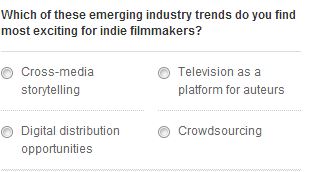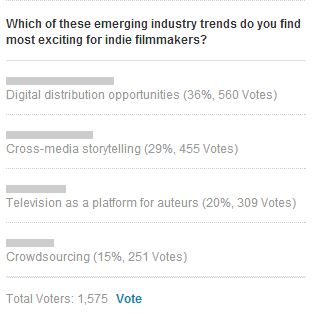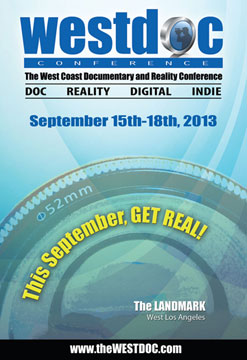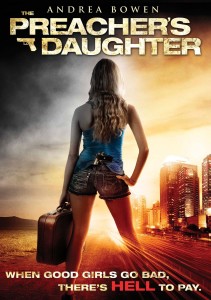
The Audacity of Hope: A Window into the Minds of Filmmakers at Independent Film Week
Next week (September 15 – 19) marks IFP’s annual “Independent FIlm Week” in NYC, herein dozens of fresh-faced and “emerging” filmmakers will once again pitch their shiny new projects in various states of development to jaded Industry executives who believe they’ve seen and heard it all.
Most of you reading this already know that pitching a film in development can be difficult, frustrating work…often because the passion and clarity of your filmmaking vision is often countered by the cloudy cynicism of those who are first hearing about your project. After all, we all know that for every IFP Week success story (and there are many including Benh Zeitlin’s Beasts of the Southern Wild, Courtney Hunt’s Frozen River, Dee Rees’ Pariah, Lauren Greenfield’s The Queen of Versailles, Stacie Passon’s Concussion etc…), there are many, many more films in development that either never get made or never find their way into significant distribution or, god forbid, profit mode.
So what keeps filmmaker’s coming back year after year to events like this? Well, the simple answer is “hope” of course….hope, belief, a passion for storytelling, the conviction that a good story can change the world, and the pure excitement of the possibilities of the unknown.
Which is why I found a recent poll hosted on IFP’s Independent Film Week website [right sidebar of the page] so interesting and so telling….in part because the result of the poll runs so counter to my own feelings on the state of independent film distribution.
On its site, IFP asks the following question:
Before you view results so far, answer the question….Which excites YOU the most? Now go vote and see what everyone else said.
** SPOILER ALERT — Do Not Read Forward Until You’ve Actually Voted**
What I find so curious about this is in my role as a independent film distribution educator at The Film Collaborative, I would have voted exactly the other way.
I suspect that a key factor in IFP Filmmakers voting differently than I has something to do with a factor I identified earlier, which I called “the pure excitement of the possibilities of the unknown.” I’m guessing most filmmakers called the thing most “exciting” that they knew the least about. After all 1) “Crowdsourcing” seems familiar to most right now, and therefore almost routine to today’s filmmakers….no matter how amazing the results often are. 2) “Television As a Platform for Auteurs” is also as familiar as clicking on the HBO GO App….even despite the fact that truly independent voices like Lena Dunham have used the platform to become household names. 3) Cross Media Story Telling remains a huge mystery for most filmmakers outside the genre sci-fi and horror realms….especially for independent narrative filmmakers making art house character-driven films. It should be noted that most documentary filmmakers understand it at least a little better. And 4) Digital Distribution Opportunities…of course this is the big one. The Wild West. The place where anything and everything seems possible…even if the evidence proclaiming its success for independents STILL isn’t in, even this many years after we’ve started talking about it.
But still we hope.
From our POV at The Film Collaborative, we see a lot of sales reports of exactly how well our truly independent films are performing on digital platforms….and for the most part I can tell you the results aren’t exactly exciting. Most upsetting is the feeling (and the data to back it) that major digital distribution platforms like Cable VOD, Netflix, iTunes etc are actually increasing the long-tail for STUDIO films, and leaving even less room than before for unknown independents. Yes, of course there are exceptions — for example our TFC member Jonathan Lisecki’s Gayby soared to the top of iTunes during Gay Pride week in June, hitting #1 on iTunes’ indie charts, #3 on their comedy charts, and #5 overall—above such movie-star-studded studio releases as Silver Linings Playbook and Django Unchained. But we all know the saying that the exception can prove the rule.
Yes, more independent film than ever is available on digital platforms, but the marketing conundrums posed by the glut of available content is often making it even harder than ever to get noticed and turn a profit. While Gayby benefited from some clever Pride Week-themed promotions that a major player like iTunes can engineer, this is not easily replicated by individual filmmakers.
For further discussion of the state of independent digital distribution, I queried my colleague Orly Ravid, TFC’s in house guru of the digital distro space. Here’s how she put it:
“I think the word ‘exciting’ is dangerous if filmmakers do not realize that platforms do not sell films, filmmakers / films do.
What *is* exciting is the *access*.
The flip side of that, however, is the decline in inflation of value that happened as a result of middle men competing for films and not knowing for sure how they would perform.
What I mean by that is, what once drove bigger / more deals in the past, is much less present today. I’m leaving theatrical out of this discussion because the point is to compare ‘home entertainment.’
In the past, a distributor would predict what the video stores would buy. Video stores bought, in advance often, based on what they thought would sell and rent well. Sure there were returns but, in general, there was a lot of business done that was based on expectation, not necessarily reality. Money flowed between middle men and distributors and stores etc… and down to the sellers of films. Now, the EXCITING trend is that anyone can distribute one’s film digitally and access a worldwide audience. There are flat fee and low commission services to access key mainstream platforms and also great developing DIY services.
The problem is, that since anyone can do this, so many do it. An abundance of choice and less marketing real estate to compel consumption. Additionally, there is so much less of money changing hands because of anticipation or expectation. Your film either performs on the platforms or on your site or Facebook page, or it does not. Apple does not pay up front. Netflix pays a fee sort of like TV stations do, but only based on solid information regarding demand. And Cable VOD is as marquee-driven and not thriving for the small film as ever.
The increasing need to actually prove your concept is going to put pressure on whomever is willing to take on the marketing. And if no one is, most films under the impact of no marketing will, most likely, make almost no impact. So it’s exciting but deceptive. The developments in digital distribution have given more power to filmmakers not to be at the mercy of gatekeepers. However, even if you can get into key digital stores, you will only reach as many people and make as much money as you have marketed for or authentically connected to.”
Now, don’t we all feel excited? Well maybe that’s not exactly the word….but I would still say “hopeful.”
To further lighten the mood, I’d like to add a word or two about my choice for the emerging trend I find most exciting — and that is crowdsourcing. This term is meant to encompass all activities that include the crowd–crowdfunding, soliciting help from the crowd in regard to time or talent in order to make work, or distributing with the crowd’s help. Primarily, I am going to discuss it in terms of raising money.
Call me old-fashioned, but I still remember the day (like a couple of years ago) when raising the money to make a film or distribute it was by far the hardest part of the equation. If filmmakers work within ultra-realistic budget parameters, crowd-sourcing can and usually does take a huge role in lessening the financial burdens these days. The fact is, with an excellently conceived, planned and executed crowdsourcing campaign, the money is now there for the taking…as long as the filmmaker’s vision is strong enough. No longer is the cloudy cynicism of Industry gatekeepers the key factor in raising money….or even the maximum limit on your credit cards.
I’m not implying that crowdsourcing makes it easy to raise the money….to do it right is a whole job unto itself, and much hard work is involved. But these factors are within a filmmaker’s own control, and by setting realistic goals and working hard towards them, the desired result is achieved with a startling success rate. And it makes the whole money-raising part seem a lot less like gambling than it used to….and you usually don’t have to pay that money back.
To me, that is nothing short of miraculous. And the fact that it is democratic / populist in philosophical nature, and tends to favor films with a strong social message truly thrills me. Less thrilling is the trend towards celebrities crowdsourcing for their pet projects (not going to name names here), but I don’t subscribe to a zero-sum market theory here which will leave the rest of us fighting over the crumbs….so if well-known filmmakers need to use their “brand” to create the films they are most passionate about…I won’t bash them for it.
In fact, there is something about this “brand-oriented” approach to crowdsourcing that may be the MOST instructive “emerging trend” that today’s IFP filmmakers should be paying attention to…as a way to possibly tie digital distribution possibilities directly to the the lessons of crowdsourcing. The problem with digital distribution is the “tree-falls-in-the-forest” phenomenon….i.e. you can put a film on a digital platform, but no-one will know it exists. But crowdsourcing uses the exact opposite principal….it creates FANS of your work who are so moved by your work that they want to give you MONEY.
So, what if you could bring your crowdsourcing community all the way through to digital distribution, where they can be the first audience for your film when it is released? This end-to-end digital solution is really bursting with opportunity…although I’ll admit right here that the work involved is daunting, especially for a filmmaker who just wants to make films.
As a result, a host of new services and platforms are emerging to explore this trend, for example Chill. The idea behind this platform (and others) is promising in that it encourages a “social window” to find and engage your audience before your traditional digital window. Chill can service just the social window, or you can choose also to have them service the traditional digital window. Crowdfunding integration is also built in, which offers you a way to service your obligations to your Kickstarter or Indiegogo backers. They also launched “Insider Access” recently, which helps bridge the window between the end of the Kickstarter campaign and the release.
Perhaps it is not surprising therefore, that in fact, the most intriguing of all would be a way to make all of the “emerging trends” work together to create a new integrated whole. I can’t picture what that looks like just yet…and I guess that is what makes it all part of the “excitement of the possibilities of the unknown.”
Jeffrey Winter will be attending IFP Week as a panelist and participant in the Meet the Decision Makers Artists Services sessions.
Jeffrey Winter September 12th, 2013
Posted In: crowdfunding, Digital Distribution, DIY, Film Festivals, iTunes, Long Tail & Glut of Content, Marketing
Tags: cable VOD, cross media storytelling, crowdfunding, Crowdsourcing, digital film distribution, Gayby, hope, IFP, Independent Film Week, iTunes, Jonathan Lisecki, Netflix, Orly Ravid, The Film Collaborative
International broadcast sales for documentary and WESTDOC Conference
A interview with the West Coast Documentary and Reality Conference (WESTDOC) Co Founder Richard Propper. Mr. Propper is also CEO and Director, International Licensing and Acquisitions at Solid Entertainment, a sales agency specializing in documentary films.
TFC: How long have you been doing international sales and with which entities and films?
RP: “I have been licensing non-fiction programming for 19 years. It wasn’t something I fell into, I had a great desire to combine the entertainment industry and international business – and I’m a current affairs and history junkie. Having completed film school and working for a small studio for years in post production, I saw a vast number of filmmakers with great documentary films, but no knowledge of what to do next. I wanted to be the first call for filmmakers when they thought about international sales.”
“Solid Entertainment has been successfully licensing programs worldwide for almost two decades via such broadcasters as: Animal Planet, ARTE, BBC , BBC2, BBC Horizon, BSkyB, Channel 4, Canal+, The Discovery Channels (worldwide), France 2/3, France 5, HBO, History Channel, M6, NBC, NHK, NOS-EO, National Geographic Channels(worldwide), Odyssee, ORF, Orbit, Planete, Premiere, Showtime, STAR Entertainment Channel, SPIEGEL TV, STERN-TV, SBS6, SF-DRS, TaurusFilm, The Travel Channel, TSR, TV Ontario, RAI, RTI, RTP, REAL-TV, VTM, ZDF.”
“At Solid Entertainment, our deal terms are pretty standard. A flat rate of 30%. No deduction for expenses. 3 year exclusive term of representation.”
TFC: What trends do you see on sales side for documentaries? Please be specific in terms of territories, rights, prices, types of films that perform v not etc.
RP: “They love (insert doc subject here) in Japan!” – Every new filmmaker I’ve ever met. – Richard Propper
“I’m going to throw a bucket of cold water on many peoples perceptions of the international broadcast marketplace. In many ways, its tougher now than ever before. There’s a huge oversupply of programs. Technology has worked wonders for the creation of content, leading to more of it. The non-fiction broadcast marketplace has been impacted by Reality TV. Channels need ratings and they have only so many hours they can license and co-produce. The line has blurred between documentaries and reality, so channels gradually began to license more and more Reality. Most territories in Europe still license good documentaries, but license fees have been declining for a few years. Asia and Latin America continue to pay modestly. Larger US broadcasters now want all rights deals. It didn’t use to be that way, a producer could count on the international rights as his/her “back end monies.” Not anymore.”
“Today, we see around $8,000 for an hour in Germany. We used to see $20,000. France, about $7,500 and it used to be $15,000. The UK – as high as $80,000, now $25,000. Generally, all the digital, free follow along rights go with the license fee. Pay VOD is still retained by the producer. We’ve had to sell more content overall and look harder for the opportunities.”
“Uniquely, American programs don’t do very well in the international marketplace. World history, nature and wildlife, buried treasure stories, science and technology stories all do well. American social issues or narrow political issues are a much harder sale. When was the last time you saw a great Italian documentary? You haven’t. Americans think our programs should sell everywhere, but we don’t reciprocate by programming other countries films on our networks. The international marketplace looks for programs that are somehow universal. It’s an art, not a science in producing programs that are attractive to the worldwide audience. I will say that some buyers recognize a well told story, others don’t. If it’s all talking heads or about some strange subculture – it won’t sell. We look at everything that comes into our office for representation – there are always surprises. If you haven’t captured the audience within the first 10 minutes, its likely the buyers aren’t going to stick around either.”
“Running times are important. If your dream is to make a feature doc, then try to come in at 75 – 100 minutes. Have a 50 minute cut-down planned for the broadcast one-hour slots. 90% of the world broadcast slots are one-hour. If there’s only a feature version, it has to compete with every Academy nominated doc or Morgan Spurlock’s or Michael Moore’s latest feature. It a very hard road if you’re not prepared. But it’s not all bad news.”
“The digital marketplace is starting to come into its own. While broadcast is challenging, there is a long tail strategy with digital – it just needs a little more time to stand on its own two legs. It takes strategy to get a good film released onto multi-platforms and various times. These strategies are being pioneered now. That is exciting. A larger audience for many films is out there, and technically there’s a way to deliver it. You just have to find and engage that audience.”
TFC: Explain the DVD landscape.
RP: “While the general focus, and rightly so, has been on VOD and a la carte program sales, I’ve found in the last year some DVD distributors who are looking for content. Keep in mind that there’s still a huge population of people who have this machine connected to their TV that provides supplemental content. We’ve had good luck getting a 4 part limited series and larger multi-episode series into Costco and Target. It’s short term sales, but its also unexpected revenue stream. VOD and a la carte programming is great, but it requires working with the right groups to get your content out there. While filmmakers are waiting for the magic formula to distribute digitally, DVD still has a place. It’s going away, but not as quickly as you might think.”
TFC: What is WESTDOC and why should filmmakers attend?
RP: “Over nearly 2 decades of traveling to television markets and film festivals, I realized that LA needed a substantial documentary conference of its own. One that wasn’t sponsor driven, nor a fortune to attend. Chuck Braverman is a friend and producer, who for years would run into me at various conferences and ask me why there wasn’t a decent conference in LA (I was President of IDA at the time) and proposed that we start one. I begged off for a time and then thought – why not? WESTDOC was born.”
“While there are some terrific conferences in other cities, LA really has this fractured creative community. Most filmmakers belong to several organizations. But where are the conferences that bring in the decision makers? Here is a true story. I was at a conference in Cannes (MIP or MIPCOM) having a meeting with someone who worked 25 minutes away from my office. I had traveled 9,000 miles to meet her. How ridiculous. With WESTDOC we’re getting these decision makers out of their offices and into an event to connect with the LA creative community.”
“When Chuck and I first sat down, we selected the best pieces from IDFA, HOT DOCS, MIP, NATPE, and all the rest. When we were done with our mission statement and outline, we knew it would be a great conference. Luckily, between us we had really great contacts with filmmakers and broadcasters. To our surprise, everyone we asked to speak said they would show up! Looking back, just our keynote speakers are an impressive bunch; RJ Cutler, Thom Beers, Kirby Dick, Joel Berlinger. Not bad for an unknown conference! This year we have Rory Kennedy, Ondi Timoner, and Kelly Day. We have 25 panels that are in the wheelhouse of documentary, Reality, and Digital. In addition, this year we have The Sit-Down – 30 minute broadcaster overviews with 43+ different networks.”
The 2013 WESTDOC Conference will take place September 15-18 at the Landmark Theater in Los Angeles, CA. For a full schedule of speakers and activities, visit their website. TFC Members will receive a promotional code for a discounted ticket. Become a TFC Member today!
About Richard Propper:
Solid Entertainment Founder and President Richard Propper is the former President of the International Documentary Association (IDA), and executive producer of over thirty internationally broadcast documentary programs. Solid Entertainment is a broadcast distribution company and one of only a handful of US specialty companies which has consistently supplied non-fiction programming to networks worldwide with a particular emphasis in Western Europe. He has spoke as an authority on development, co-production agreements, and the intricacies international distribution at: MIPDOC, HOT DOCS, IFP, AFM, Silverdocs, Realscreen Summit, NATPE, IDA, UCLA, and USC. Richard is also the co-founder of WESTDOC: The West Coast Documentary and Reality Conference. WESTDOC is a three-day event that brings together preeminent producers, directors, writers, network executives, agents and distributors for insightful and unique seminars, as well as networking opportunities.
Orly Ravid August 29th, 2013
Posted In: Digital Distribution, Distribution, education, International Sales
Tags: documentary film, foreign sales, independent film, international broadcast sales, Orly Ravid, Richard Propper, Solid Entertainment, The Film Collaborative, WESTDOC
Do festival awards matter?
The simple answer is “yes..well…sometimes.” Like most questions in this business, there is a simple answer for casual conversation, and a truer answer for a more in-depth analysis.

It would be nice to say that all film festival awards are valuable for independent film distribution, but the truth is that it mostly comes down to what Festival it is (what actual award it is is less important for the most part). The simplest rule is, if a particular Festival matters, then an Award from that Festival matters even more. If a particular festival doesn’t show up on anyone’s radar, then the Award won’t either. The easiest comparison to draw is the use of press/publicity quotes in marketing…i.e. nobody cares about a glowing review from a press outlet they’ve never heard of. But if a respected journalist at a respected publication gives you a great review…well that matters a great deal.
We’ve worked on a lot of seemingly “small” films, like CONTRACORRIENTE by Javier Fuentes, VALLEY OF SAINTS by Musa Sayeed, A RIVER CHANGES COURSE by Kalyanee Man, and THE INVISIBLE WAR by Kirby Dick that jumped up hugely in prestige and profile when they won big awards at the Sundance Film Festival. Suddenly “everyone that’s anyone” had heard of these films even though they paid no attention to them just two days before. By getting the ultimate stamp of approval, they suddenly became “serious” films in the minds of those who pay attention to such things.
But let’s not exaggerate… as much as they changed the general perception of the films, I don’t think they really changed the acquisitions picture for any of these particular titles. Maybe the PRICES went up for those that did get bought, but I don’t think it radically changed the number of buyers interested in the titles. And not all of those ever got serious acquisition offers anyway.
I think there are three major ways that festival awards matter. First of all, it distinguishes you from the glut of available titles at any given festival as one of the films that one should pay attention to first. Meaning, if you are the kind of person (Industry, press, or consumer) who is paying attention to a particular festival, then of course one easy way to determine what one should see first is by starting with the ones that have won the awards. I think this is PARTICULARLY true for OTHER film festival programmers, who face the daunting task of pouring through thousands of available titles and submission to their festival. Why NOT start with the ones that are winning awards? Its just good triage technique.
Secondly, if someone is a discerning film consumer looking to discover new films to watch, why wouldn’t you pay attention to the films that are winning the awards? To that end, I think the right Festival Awards have tremendous marketing value…but really only for the discerning consumer. So, that’s not the majority of consumers, but there ARE a lot of cinephiles out there. And they are the first audience any independent filmmaker wants to reach.
Let me give you a simple marketing example….I am on the e-newsletter of LOTS of films that send me updates on their progress all the time…and for the most part I pay no attention to them. But if I start to notice that the film is winning a lot of great awards…which can be easily put in the subject line and the header of the email….of course I take note of that and of course I become more interested in the film. Suddenly it changes in my mind from one of a million films vying for my attention to one that must deserve my attention…because it is being validated by “tastemakers” I have heard of and have some respect for.
On the subject of the marketing value of Festival Awards, there are a couple of truisms I’d like to address:
1) The general perception is that Audience Awards matter more than Jury Awards, because they reflect the will of the people (which more closely resembles your eventual target audience), while Jury Awards reflect the view of the elite (those select insiders chosen by festivals to judge according to their own snobby tastes). In truth, I don’t think this theory stands up to rigorous analysis of the data. Sometimes it is the opinions of the jury that most closely mirror the press and taste-makers that propel a film onto greater success after its Festival run.
2) Part of the problem with Audience Awards is that in many ways they are popularity contests, not dissimilar to high school president elections. Because of the way Audience Awards are voted on by everyone in a given screening, sometimes its just the film that packs the house with the most crew and friends and close-knit community that wins the Award. Sometimes even a great Q&A can swing the results. And enterprising filmmakers should take note of this….as it is not unusual for a small film in a small theater to win an Audience Award because the filmmaker simply had more friends in attendance than anyone else did.
Unfortunately, the dominance of digital distribution in today’s independent market has made the marketing value of film festival awards a lot LESS relevant than they used to be….and that’s because iTunes, cable VOD et al don’t really offer much marketing space where you can actually SEE any of the Festival awards. When you used to browse through a video store and pick up the box cover, you could actually SEE all the laurels and rent it for that reason. Now you’re going to have to see the laurels in an email or banner ad or hear about it in a review or something…and then go LOOK for the film. That’s a lot less immediate than it used to be, and it makes the job of marketing a lot harder.
Finally, lets not downplay the fact that a lot of Festival Awards come with MONEY! There are some staggeringly large Festival awards out there…Dubai, Heartland etc…but I don’t advocate submitting to festivals just to go after the award money. That’s just gambling and your odds are probably better on a slot machine. But when a film starts to rack up a few awards, it can certainly get into the five figures of revenue…..and in this market that’s certainly nothing to sneeze at!
Jeffrey Winter August 1st, 2013
Posted In: Film Festivals
Tags: A River Changes Course, awards, Contracorriente, Digital Distribution, distribution, festival programmers, Film Festivals, independent film, Jeffrey Winter, prizes, Sundance Film Festival, tastemakers, The Film Collaborative, The Invisible War, Valley of Saints
Following up on TFC filmmakers-The documentaries
Last week, I brought you up to speed with some of our clients from the narrative side and now I want to let you know about some of our documentary talent.
One of the perks of working with The Film Collaborative is that I get to help these important stories reach a wider audience. Our docs have been nominated for multiple Emmy Awards, Independent Spirit Awards, and have won both Audience and Grand Jury prizes at Sundance. In fact, Kalyanee Mam’s A River Changes Course won the World Doc Jury Prize at Sundance earlier this year. As a history buff and political activist, I think these filmmakers and their subjects all deserve special attention. I would also like to recognize that Marta Cunningham recently won the jury prize for best doc at Frameline where her Sundance doc Valentine Road was the centerpiece. In addition Yoruba Richen‘s LAFF doc The New Black won the audience award at Frameline and AFI (in the same week!). The film was also an honorable mention for the jury prize at Frameline. Below is just a small sampling of the visionary truth tellers we have worked with.
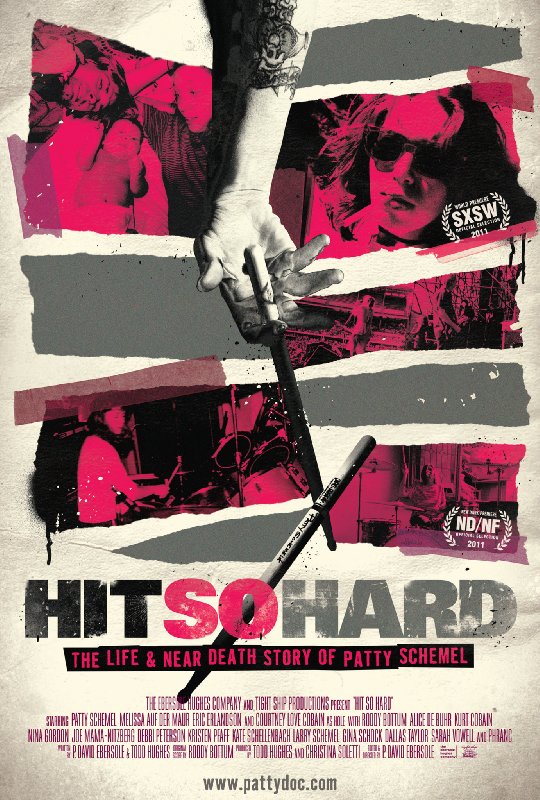
P. David Ebersole and Todd Hughes are the ultimate power duo in the doc world. Their charm, passion for their work, and sheer charisma almost makes me forget that they work behind the camera. We handled festivals and advised on distribution for their 2011 doc Hit So Hard which premiered at SXSW 2011and was released theatrically by Variance. The film was nominated for a GLAAD media award and even helped get the band, Hole, to reunite. In the short time since, they produced conspiracy theory doc Room 237 based on Kubrick’s film The Shining which world premiered at Sundance 2012 and even went to Cannes! The film grossed over $250,000 in its North American release. Ebersole directed and the duo produced the Lifetime Doc Dear Mom, Love Cher.
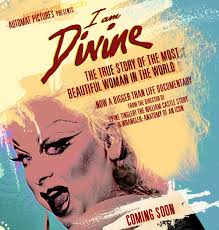
Jeffrey Schwarz’s doc Vito world premiered at NYFF 2011 and screened in Berlin 2012 before opening both Outfest and Frameline and airing on HBO. Like Hit So Hard, it was also nominated for a GLAAD media award. Schwarz is as beloved for his films as he is for his flawless EPK’s. He is back with TFC for his latest doc, I Am Divine, a look at the life and talent of the ultimate John Waters muse which world premiered at SXSW 2013 and was recently acquired by Wolfe Releasing. We are handling festivals and international sales.
Jennifer Arnold’s poignant and inspirational doc A Small Act debuted at Sundance 2010 and went on to air on HBO and was nominated for an Emmy! Since then this dynamo has been hard at work. She directed the doc segments Glee: The 3D Concert Movie, her ESPN doc The Diplomat was just at Tribeca and she has directed for the shows TableTop and Biz Kids.
David Weissman is a San Francisco icon. His films The Cockettes and We Were Here both brought important parts of Gay SF history to a wider audience and world premiered at Sundance. We Were Here went onto screen at Berlin and play a full week theatrical engagement at the 1,400 seat Castro theater. This touching doc on early AIDS activists was released theatrically by Red Flag Releasing, nominated for a Spirit Award and short listed for the Academy Award. Since its release, he has been generating headlines for highlighting his own problems in dealing with the sky high rent of the city and the harm imposed by the Ellis Act. He has since moved to Portland full time where he programs the only Queer Doc film festival in the world.
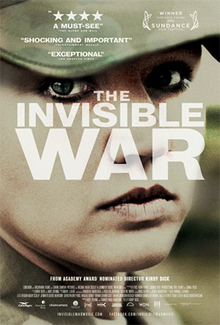
Then there is Kirby Dick and his film The Invisible War. TFC sold the film to New Video and Cinedigm (who have since merged) shortly after it won the Audience Award at Sundance 2012. This hard hitting doc about the rape and sexual abuse of soldiers in the US military has screened multiple times at the Pentagon and been cited for the changes in how the military handles sexual assault cases. It maintains a 100% rating on Rotten Tomatoes and was nominated for an Academy Award. In addition to sales, TFC handled festivals, broadening the stories of these victims’ to be heard all over the world. Given his prolific library of work (he’s had five films in competition at Sundance) we cannot wait to see what he does next.
The Film Collaborative feels very fortunate to have worked with filmmakers of this caliber and we look forward to seeing what the future holds for all of them.
Bryan Glick July 11th, 2013
Posted In: Distribution, Filmmakers of note
Tags: A River Changes Course, A Small Act, David Weissman, documentaries, Hit so Hard, I am Divine, independent film, Jeffrey Schwarz, Jennifer Arnold, Kalyanee Mam, Kirby Dick, Marta Cunningham, P. David Ebersole, The Film Collaborative, The Invisible War, The New Black, Todd Hughes, Valentine Road, Vito, We Were Here, Yoruba Richen
Following up on TFC filmmakers-The narratives
The Film Collaborative has been around for over three years now and in that time we’ve seen our films and members go on to win multiple audience and jury awards at Sundance, get nominated for Oscars and win Emmy’s, last year alone we had 6 films nominated for Independent Spirit Awards.
Not only are we dedicated to our current clients, we are just as invested in our filmmakers’ future projects and we wanted to follow up on what some of our TFC Alumni have been doing. This week we’ll highlight some of our narrative film directors.
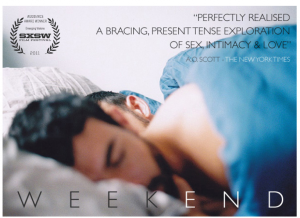
Andrew Haigh’s Weekend took SXSW 2011 by storm, won the audience award and was released in the US by IFC/Sundance Selects. Andrew most recently directed an HBO pilot about the lives of gay men in San Francisco that was just picked up to series. The show, starring Jonathan Groff, will premiere in the spring of 2014.
Aurora Guerrero’s debut feature Mosquita Y Mari premiered in the NEXT section at Sundance 2012 and was acquired by Wolfe Releasing. It was nominated for an Independent Spirit Award and Aurora is hard at work on her follow up Los Valientes. She was awarded a $35,000 grant by San Francisco Film Society and we can’t wait to see what she has up her sleeve for this film.
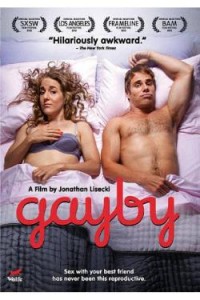
Jonathan Lisecki’s witty banter shined in Gayby which debuted at SXSW 2012. Nominated for a Spirit Award for Best First Screenplay and released by Wolfe, the film has been making audiences laugh around the world. In fact, it reached as high as #5 on iTunes during Pride Week after being chosen as Movie of the Week by Apple. Jonathan co-produced and stars in Big Gay Love opposite Nicholas Brendan (Buffy The Vampire Slayer). The film just screened at Frameline and will be coming to Outfest later this month.
Spike Lee is certainly one of the more prolific filmmakers to come our way. Red Hook Summer premiered at Sundance 2012 and grossed over $300,000 when it was released theatrically by Variance. In what has been a busy year for the bold auteur, his documentary Bad 25 premiered at the Toronto Film Festival 2012 and aired on ABC. He has multiple films lined up in the next year.
Ira Sachs is another indie veteran, but his film Keep the Lights On brought him his widest audience to date. It premiered at Sundance 2012, won the teddy at Berlin, and was nominated for four Spirit Awards. It was snatched up by Music Box and was the highest grossing gay film of the year. Since then, Ira was named a Guggenheim Fellow and his follow up Love is Strange stars Alfred Molina and Michael Gambon.
Special Producers Shoutout
Laura Heberton, who produced Gayby, had Matthew Porterfield’s I Used to be Darker at Sundance this year and Bluebird at Tribeca.
Chad Burris’s film Ass Backwards brought him back to Sundance just one year after Mosquita Y Mari.
Next week we’ll take a look at what our documentary filmmakers are doing now.
Bryan Glick July 3rd, 2013
Posted In: Filmmakers of note
Tags: Andrew Haigh, Aurora Guerrero, Chad Burris, Gayby, independent film, Ira Sachs, Jonathan Lisecki, Keep the Lights On, Laura Heberton, Mosquito y Mari, Red Hook Summer, Spike Lee, TFC filmmakers, The Film Collaborative, Weekend
Considerations BEFORE signing over your film’s home video rights
Although DVD distribution revenue has by all accounts declined significantly since the start of home video and the development of the format, most film distributors still distribute DVDs. Sales are down, but there are profits to be had for more commercial or popular fare that is strongly supported with marketing spend, whether studio, indie, or niche.
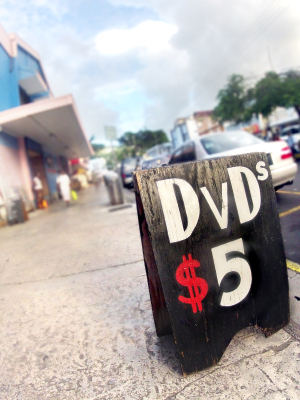
We always advise filmmakers to conduct Direct Distribution of DVDs to their audience even when we or someone else is handling licensing deals for them. Often though, if a distributor takes on Home Video (i.e. DVD), the expenses associated with the release and the diminishing revenues are the explanation for why digital rights must be licensed to the distributor along with the rights to release the film on traditional physical formats. Digital rights, at least many of them, rightly belong in the home video category,but here’s the rub. While the distributor has more money and more connections and ability to get a DVD into retail stores, they likely take a bigger commission on digital platform sales than an aggregator who is paid a flat fee or a smaller percentage. Of course, even direct digital distribution (streaming from your own site) requires some service or other that takes a fee. It’s just usually less costly than a conventional distributor’s fee. Back to the rub.
So a well heeled distributor gets a big retailer to order your DVDs when you could not have achieved that on your own and probably more money is spent marketing it than you ever could afford to spend. But note that’s also more money to be recouped before you see a return. The DVDs that don’t sell come back. And what comes back gets credited. It should be noted, many conventional distributors take their sales fee off of initial sales, regardless of returns.
So the distributor has the muscle to move the units to a retailer, but not enough muscle to get the public to buy them. They did their best, and even risked their expenses and time and staff energy. But the units come back just the same. Their sales fee is calculated off the top and the net left over for the filmmaker can be paltry. You may or may not be worse off than having done all the distribution yourself.
It is something to think about before you push for traditional distribution where there is not a big enough advance, or none, to recoup your initial investment in the project and you might have been better going it alone, still holding the rights over your film. These things are indeed a calculation of your time and money vs the distributor’s. At least check your contract for language that allows the distributor to keep the sales fee even for the sum of sales attributed to units ultimately returned and refunded. Perhaps compare potential results. Insist on a direct distribution clause so at least you have the chance to make the direct sales to the fan base you have worked so hard to build on your own. Or get clear about what your distributor can do for you that you cannot do for yourself, if anything, and what that is worth to you. Then make sure the contract comports accordingly.
Orly Ravid May 2nd, 2013
Posted In: Distribution, DIY, Marketing, Retailers
Tags: direct distribution, DVD distribution, home video sales, independent film distribution, Orly Ravid, The Film Collaborative
The Preacher’s Daughter-a low budget indie film that broke Lifetime records
There are many ways a film can reach its audience. While independent filmmakers often lock themselves into the path of securing a festival premiere, signing a sales agent, hoping for a sizable distribution deal that includes a theatrical release and sailing off into the sunset to make another film, they could be overlooking options that make better sense for the type of film they have.
TFC member Michelle Mower knows the indie filmmaker mindset well having worked for many years with Houston based organization Southwest Alternate Media Project (SWAMP). She too thought that her first feature film, The Preacher’s Daughter, would follow that same path. But after sending TFC’s Orly Ravid the rough cut of the film, advice came that altered her plans. I spoke with Michelle to find out how her film achieved distribution and succeeded in bringing Lifetime Movie Network its highest ratings for 2012.
SC: “Your case study is particularly interesting to me because your initial thought was you wanted to have a festival premiere and tour the circuit. But something totally different happened?”
MM: “Isn’t that normal for independent films? Isn’t the festival circuit what all indies are supposed to do? [laugh]”
SC: “Yes, totally what people think. But other opportunities came up for your film. First let me ask, how did you finance the film?”
MM: “We funded this film in stages. We raised our shooting budget first which was the ultra-low, $50,000 budget. But as we got into preproduction, we were able to attach name talent to the project, so we raised a little more and then as we got into production and post production, we got a few more investors to help us finish the film. It was very typical of most first features where you start with one budget, but end up with another and you struggle to get the film finished. We didn’t really know what would happen with the film, but we did feel like we had a great story, some very strong performances, some things that would definitely attract an audience.”
SC: “How long did it take to shoot and finish the film?”
MM: “We ended up with a total of 43 days for the shoot which is really long and I do not recommend it. We had crew changes and scheduling issues, so it caused us to prolong our production. Ultimately, it took us over a year to finish the film.
SC: “Was the film shot mainly in Houston, Texas?”
MM: “Yes, the whole film was shot in Houston and the surrounding area. The film is set in a small town in East Texas, so I shot it in the little towns surrounding Houston.”
SC: “Tell me about casting. How did you land Andrea Bowen?”
MM: “It’s a funny story. I sent out a casting notice in LA. Initially, I wasn’t intending to cast there because I didn’t think I could afford it. But I was out there for the Los Angeles Film Festival so I thought if I’m out there I might as well see what would happen. I posted on Breakdown Services, and within 24 hours I had 1400 submissions just for the lead role alone. I narrowed it down to a couple hundred and then my casting director went through those and we invited about 60 women to audition. 36 showed up and one of them was Andrea Bowen, from Desperate Housewives.”
“I had no idea who she was. I had seen Desperate Housewives, but not for years and she was probably around 13 years old when the show started. To say she nailed that audition was an understatement. She’s an extremely talented actress and it was very apparent that she knew what she was doing. When she left, I turned to the interns working with me and they told me who she was and I had mixed emotions because she was so awesome, but I didn’t think I could afford her. I wasn’t even going to waste either of our time in trying to contact her. But that was my naive reaction and I have learned since that actors do want to work, but they also want good roles. If you have a good script with a really strong role, they are willing to work with you.”
“Her agent contacted me, we sent over the full script. Andrea loved it and that gave me confidence in my writing because I am sure she reads scripts all the time. So we negotiated with them and were able to get her on board. She was wonderful to work with and I am sure the film would not have gotten nearly as far as it did without her.”
“Our male lead, Adam Mayfield, is from Houston so we had some mutual friends. He is based in LA too, and I was leery about bringing in too many people from other cities because of the budget constraints. But he was in town one weekend and we met for lunch and I just knew he was the right guy. He was just coming off of his role on All My Children and he wanted to work with Andrea so it all worked out.”
SC:”So what happened to change your course on distribution? Was the film premiered anywhere?”
MM: “I met Orly at the annual Business of Film Conference in Houston that is presented by SWAMP when I was in production and she told me to keep her apprised of what we were doing with it. I joined The Film Collaborative and once I had a rough cut, I sent it to Orly and asked her to give me feedback and guidance. I was thinking about festivals until she came back and said it wasn’t a festival film because it was too mainstream, too commercial in feel. It probably wasn’t going to be programmed by the bigger festivals. She said I needed to think about other options. We had already submitted to some festivals, like SXSW, and it did not get in so it made me rethink what I was doing with the film and look at other options.”
“Orly introduced me to Imagination Worldwide, a sales agency, because they often work in broadcast licensing. I sent them a one sheet and that made them ask to see the film. I sent them my rough cut and they asked to rep it for the cable market. This was November 2011 and they took it to EFM the next February. They always knew that it might be of interest to Lifetime, but I didn’t get my hopes up. I was really still trying to raise more funds to get it absolutely completed.”
“We went ahead and did the world premiere in Houston in April 2012, and in June we sold to Lifetime Movie Network. I did have to cut down the film because there is certain content that Lifetime won’t air, curse words and nudity and stuff. It premiered on August 31, 2012 on the Lifetime Movie Network, one of Lifetime’s specialty channels. It was the highest rated movie on the channel in all of 2012.”
SC: “Were you involved in the promotion of it and do you know what they did?”
MM: “I had been promoting it in my social network for a long time. I always thought it would go into the festivals and I would need my network, so I had a Facebook page for the film and we started our own audience building from the get go.”
“When Lifetime took the film on, their promotion came through TV ads. I expected the promotion on the Lifetime Channel because they typically do that, but I didn’t expect to see it on OWN, NatGeo and Bravo and all of these other cable channels. I asked my Facebook fans to let me know what channels they were seeing the promotion on and we counted 9 different networks. So they did a great job promoting it in the broadcast world.”
“I had been told earlier in the post production process that this was not a marketable film. It wasn’t a Christian film because it was too edgy and it wasn’t an indie film because it wasn’t edgy enough. But Lifetime was able to market it well.”
SC: “So in your deal with Lifetime, are you able to still sell internationally? Or sell on your own?”
MM: “My deal with Lifetime is for North American, Latin American and UK broadcast rights. Pretty much every other territory was open, but we have sold to about 7 other territories in the world now. We will have a DVD/cable VOD release this month in the US [DVD will be available on Amazon April 9). It will be the director’s cut so all the scenes that I had to cut out of the broadcast version will be back in. Per our contract with Lifetime, we cannot do Netflix, iTunes, Hulu streaming until after the license expires in 5 years.”
“If you had told me when I started this process that my movie would reach millions of people, I would have laughed. But things happen the way they do for a reason.”
SC: “I think it is wonderful for a first feature film to sell, repay the investors and air on a network where millions would see it. Not many first timers ever achieve that.”
MM: “I have seen many strong feature films in my former work with SWAMP and I have attended many workshops and conferences so I knew the challenges I faced as a first time feature director. I know it is very difficult to achieve distribution for indie films and even if you do, often it is for no advance or very low advance. If a theatrical release happens, it is for a one week run in New York and LA, the two most saturated markets for films. Then on to digital release where very little is done to promote it. In that scenario, it is nearly impossible to make money back for investors or for the filmmaker. My advance did repay my investors.”
“I started out thinking I wanted to go that route, the festival-theatrical-digital route. But when I faced the reality of it and thought about what the Lifetime offer meant, it was really a no brainer. Make your investors’ money back and have millions of people watch your film. Pretty simple decision really. Plus, because of that deal, opportunities come to me that weren’t there before. When I call for meetings, people take the call. I have people interested in what projects I am considering. Not only did I sell to Lifetime, it was a success for them so that helps get more interest from the industry for my work.”
SC: “So what is your parting advice for filmmakers, either new ones or those who are working on their second or third film?”
MM: “I sat on this script for 9 years because I was afraid. What would happen if I made the film? Would I put my family in financial hardship? I made all kinds of excuses for why I shouldn’t make it at that time. My advice is stop making excuses. Make your movie. No one is stopping you and there are opportunities to sell it if you are open to them. Figure it out and make it happen.”
Thanks Michelle, for your candid answers and hopefully there are a few filmmakers out there re-evaluating how they plan to release their films.
Sheri Candler April 4th, 2013
Posted In: Cable, Distribution, International Sales
Tags: Adam Mayfield, All My Children, Amazon, Andrea Bowen, Breakdown Services, Desperate Housewives, Imagination Worldwide, independent film, Lifetime Movie Network, Los Angeles Film Festival, Michelle Mower, Orly Ravid, Preacher's Daughter, Southwest Alternate Media Project, The Film Collaborative
SXSW 2013 Festival in Review

Upon returning from the constantly evolving confab of everything tech and media that is SXSW, I was asked by a friend to describe in one word what attending the festival was like. Without hesitation I uttered, “spam”. SXSW is a little bit of everything. This is both what continues to make it a viable event and also its Achilles heel.
For those who have never been, here’s are some quick facts on what differentiates the festival from other major fests in the US (Sundance, Tribeca, Telluride, LAFF, etc):
–SXSW is a FOR PROFIT. Filmmakers pay their own way to attend (though badges are comped).
–There are no press and industry screenings and there is no formal sales market. You either have a film badge or you don’t and it’s first come first serve. This means you could go to a screening and 20 people are there or the line could wrap around the block.
–Not only are films screened, but they have a comedy festival, a music festival, a tech conference and it all overlaps with the film festival. They fill the fest with literally hundreds of panels and discussions on just about every topic you could think of.
What makes the festival work is its completely open atmosphere. People who otherwise might be closed off to a filmmaker are not only accessible but they are often willing to talk. At the SXSW closing party you had shorts filmmakers rubbing shoulders with Brie Larson while local college students conversed with distributors over shots. It was truly a sight to see.
I have been going to the festival for a few years now and this year’s crop was a real eclectic and fresh bunch of films. The documentary slate was WAY, WAY stronger than the past few years, but there also wasn’t a clear stand out. To my mind, it was also the gayest year on record with no fewer than a dozen docs that prominently feature LGBTQI+ story lines. Even the non queer films I saw like Unhung Hero were packed with gay men enjoying a virtual tour through a Penis garden in South Korea (literally).
I would also like to personally applaud the filmmakers of those docs for supporting one another. It was great to see how many of the producers/directors showed up to one another’s screenings. This is yet another distinction from the festival standard. Filmmakers at SXSW find the time to go see a few films from other filmmakers (honestly I have no idea how with so much going on, but the point is that they do it).
Which brings me to the one constant theme that I heard from people during the fest. It is just too many things going on at once. Sometimes fewer choices is beneficial. I will attest that creating my schedule for SXSW took me 3x as long than creating my schedule for Sundance. While SXSW had about 25 or so fewer world premieres, they actually screened almost 20 more films in total. They also do not start film screenings till 11:00 AM so you have one less screening slot per day.
But even if there were no films, there is still the tradeshow with hundreds of vendors, mock casting sessions, panels, meet ups, over 3000 bands performing, parties on each corner, sponsored stations, and dozens of brand new startups. In fact, one of the most rewarding things during the festival that I did was go to a meet up of new film oriented companies.
The fest this year extended more premieres into the second half of the festival (when the much larger music festival often results in a mass exodus from the film venues) and it did seem to help. Attendance was clearly up during the second half of the festival. In some cases, films were even able to fill up which I would not have imagined possible judging from previous years
The deals this year have been a bit slower than in year’s past, but expect them to trickle down in the coming months. Interestingly, the two of the three distributors (Drafthouse and Magnolia) that have acquired world premieres from the festival have deep ties to the state of Texas. Drafthouse Films bought the midnight film Cheap Thrills and fellow midnight entry Haunter was acquired by IFC Midnight. Gross out horror comedy Milo was bought Magnet (The genre arm of Magnolia) and indie darling, Joe Swanberg, sold his film Drinking Buddies to Magnolia.
Other films to announce deals at or just before the festival include audience award winning docs The Punk Syndrome (GoDigital) and A Band Called Death (Drafthouse Films). Fellow doc, These Birds Walk, went to Oscilloscope. Sundance breakout Muscle Shoals was acquired by Magnolia who clearly had a busy festival. It is worth noting that the producers have chosen to donate all profits to two different music organizations.
SXSW has solidified its place as the younger, hipper, indie version to Sundance. The films tend to skew more towards genre fare, there are plenty of comedies, the docs go more human interest than overtly political, and often what the films lack in polish they make up for in gusto. This is the festival that has recognized some of the freshest voices in indie film like the Duplass Brothers, Amy Seimetz, and of course Lena Dunham.
In talking with filmmakers, it is clear a lot more are willing to take matters into their own hands and pursue DIY. There is very little of the big producer ego permeating through the festival and for filmmakers who attend, they can see what will be the norm in the next two-three years by embracing the new tech companies whose presence, while a distraction, is also part of the charm.
I also would like to applaud the festival for staying true to its Austin roots. There were a large amount of Texas based films that made it into the festival. Austin is an indie film pioneer and playing with the big boys of NY/LA. The commitment to championing their own is admirable, but the truth is these films by and large are as good (if not better) than fellow entries from the larger and more typically thought of film hubs.
While SXSW still has work to do in shaking off the image of being the second choice to Sundance, the fact is they are growing at a rapid pace and the quality of films is constantly improving. Since it takes place after Sundance and Berlin, it will never be able to equal their heights on the sales front, but if distributors were smart, they would intentionally hold out for a SXSW film or two to add to their slate. Especially if they have a good VOD/Digital operation in place.
Finally, I can’t in good conscience finish this post without mentioning that I won $70 in gift cards from Fandango by twice stumping their guru on 80’s film trivia. Thank you Fandango and I look forward to using the gift cards to see more of the films from SXSW as they enter into the theatrical marketplace.
Bryan Glick March 23rd, 2013
Posted In: Film Festivals
Tags: A Band Called Death, Bryan Glick, Cheap Thrills, Drinking Buddies, film festival, filmmaker, filmmaking, for profit festival, Haunter, independent film, Milo, Muscle Shoals, sxsw 2013, The Film Collaborative, The Punk Syndrome, These Birds Walk, Unhung Heroes
SXSW 2012 outcomes-Kickstarter, DIY and digital rule!
TFC is stoked to be at SXSW 2013! In preparation of this year’s festival, we’ve taken a good look at how films performed that premiered at the festival last year. Always good to know a few facts.
This is the only major film festival in the US that is a FOR PROFIT. As of this writing, it is also the only one that does not provide grant and/or distribution support directly to at least some of their films. In addition, the festival coincides with a tech conference where companies like Twitter were launched and it is the largest music festival in the United States. All of the above can make it very easy for films to get lost in the shuffle.
With all that said, slightly over 2/3 of films that world premiered at the festival last year secured some form of domestic distribution. While these numbers might seem bleak, they aren’t as bad as they appear. Noticeably absent from last year’s list are the big indie players like SPC, Focus Features and TWC. These companies often exhaust their funds at Sundance and EFM looking for bigger tent-pole releases. Still the festival is one of the best launching pads for an indie film in North America. IFC, Magnolia, Factory 25, Phase 4, Go Digital, Anchor Bay, Cinedigm, and Snag Films all acquired multiple films. I expect many of these companies to be in play again this year as well as a lot of distributors that were outbid on films during the buying frenzy at Sundance this year.
From last year’s premiere crop that were not studio releases, there have been three films that have grossed over $100,000 in domestic box office (though I expect one more to reach that mark). Roadside Attractions acquired rights to Blue Like Jazz before the festival and the film has far and away the highest grossing theatrical revenue with $595,018 for 8 weeks on a max screen count of 136 . The film notably raised $345,992 on Kickstarter, almost 3x its stated goal. Adapted from Donald Miller’s memoir, the film came with a large fan-base already attached and was widely supported by the Christian community. Take heed of this fact!
PDA self-released the child chess documentary Brooklyn Castle after raising funds via Kickstarter. The film also sold remake rights for a TV series. To date it has grossed slightly over $200,000 after 11 weeks in theaters with a max screen count of 13 which, while out performing all other documentaries from the festival, makes it the lowest grossing PDA release.
Beware of Mr Baker, meanwhile, has become something of a surprise hit and just passed the century mark at the box office. It is now available on iTunes where it is in the top 100. A little under ½ the film’s tally came from one theater in NYC. So far, it has played 12 weeks in a maximum of 15 theaters. This doc is exactly reflective of the film one expects to see at the festival. It is a music focused film with a young director and edgy subject matter. Snag Films holds all digital rights to the film. This is notably much better than fellow Snag Films doc, Decoding Deepak, which reported opening weekend grosses of $9100 on 3 screens and quickly faded out of the theater. Both have most likely done solid numbers on digital platforms as marquee titles for Snag.
Like Blue Like Jazz, Fat Kid Rules The World was massively successful on Kickstarter raising $158,000 for its theatrical release. Matthew Lillard made his directorial debut with this film based on an award winning book that has many shades of his punk music upbringing. The film’s production budget was reportedly $750K. However, the film only grossed $41,457 in a one week run according to reported theatrical box office numbers. The theatrical consisted of a dozen cities with additional screenings supported by TUGG. It was released in partnership with Arc Entertainment.
Music Box Films has steered Starlet to over $88,000 with the film still playing in theaters, but near the end of the run. So far it played 12 weeks at a max screen count of 10. While not great numbers, the film about a unique friendship between an elderly recluse and a young porn star features real sex, which made it inaccessible to a number of theaters. Also still in theaters is the doc Gregory Crewdson: Brief Encounters about the notorious photographer. Zeitgeist keeps slowly adding dates and the film has steadily passed the $50k mark after 17 weeks with a max screen count of 3.
Performing on a smaller level were some well received documentaries. Oscilloscope’s Tchoupitoulas with $19,375 after 5 weeks on a max of 6 screens and Samuel Goldwyn’s Waiting for Lightning which got only $21,577 for one week on 11 screens.
On the narrative side, Cinedigm took horror film and midnight audience award winner Citadel to $13,377 in theaters for 9 weeks on a max of 7 screens and Red Flag Releasing handled the theatrical for the long delayed Duplass brothers film The Do-Decca Pentathlon. That film grossed $10,000 in its opening weekend on 8 screens and Fox Searchlight handled all other aspects of distribution.
TFC client Gayby was acquired for six figures out of the festival by Wolfe Releasing. The film grossed $14,062 from four screens and was the highest grossing gay comedy of the year. It played two weeks in Manhattan where it out-grossed all other films screening at The Cinema Village combined and later had a bonus run in Brooklyn. It also included a number of unique approaches. Most notably instead of a week-long theatrical in San Francisco, we held two special screenings at the Castro Theater. The gross for those screenings was higher than that of the entire run in the LA market. Though only out on DVD/Digital a few months, the film has already been profitable for Wolfe Releasing.
A lot of SXSW films embraced the youthful component of the festival and eschewed theatrical distribution entirely.
Documentaries: The Announcement, The Central Park Effect (Music Box has DVD rights), Uprising: Hip Hop & The LA Riots, and Seeking Asian Female premiered on ESPN, HBO, VH1, and PBS respectively.
Booster is available for download on iTunes/Amazon. Daylight Savings did a DIY digital, Extracted was released on digital platforms courtesy of Go Digital and Anchor Bay acquired The Aggression Scale, but opted to go straight to DVD.
Factory 25 just put Pavilion into release. They released The Sheik and I at the end of 2012, but did not report grosses. It played in four theaters with only Seattle lasting more than a week.
3,2,1…Frankie Go Boom (Phase 4),The Tall Man (Image), $ellebrity (DIY), King Kelly (Go Digital) and The Jeffrey Dahmer Files (IFC Midnight) also opted not to release grosses and all were out of theaters in a week (except for King Kelly which lasted 2) with a tally of under $10,000 likely for each. A few of these are in Amazon Instant Video’s top 25 list though.
Funeral Kings (Freestyle) and Beauty Is Embarrassing (DIY) did not release grosses, but played in far more theaters. The latter likely finished comfortably over $25,000. Kings is in the top 100 list on iTunes.
Meanwhile, several films failed to break $10k. Notably, they are all non-competition narrative films. All except for The Last Fall had rotten ratings on rottentomatoes.com, many below 10%. Perhaps they fared much better on digital and VOD for which numbers are not available.
These films included Crazy Eyes, bought pre fest by Strand Releasing and grossed $6,106 on 5 screens in 3 weeks. Cinedigm’s In Our Nature, a family drama starring Zach Gilford, Jena Malone, John Slattery, and Gabrielle Union grossed $6,543 in 2 weeks on 1 screen. The critically panned Magnolia comedy Nature Calls grossed a paltry $646 on 2 screens in its entire run. The Last Fall, a life-after-football drama, only reported its opening weekend gross of $6,100 on 1 screen. Of these films, it came the closest to covering basic costs of a theatrical run.
Millenium Entertainment dumped comedy The Babymakers into the marketplace on 11 screens where even with the help of TUGG it only amassed $7,889. Anchor Bay’s generic horror film, Girls Against Boys, grossed $7,529 and went right to digital and VOD after 1 week in theaters. However, it is one of the top 100 horror films in DVD and Amazon instant video. They acquired the film for seven figures! Rec 3: Genesis, the third film in this successful horror series, was pre bought by Magnolia and lasted 4 weeks in theaters, but never had a PSA over $1k and bowed out at $9,600.
In the yet to be released category– IFC’s jury winning narrative film Gimme the Loot will be released March 22. Phase 4 is sitting pretty on the audience award winning Eden and See Girl Run. Tribeca has Somebody Up There Likes Me queued for VOD release on March 12. Magnolia just bought Big Star which screened as a work in progress at the fest. Small Apartments bought by Sony Pictures Worldwide is also waiting in the wings for release sometime in 2013. Factory 25 has Sun Don’t Shine geared up for April 29 release.
BONUS TIDBIT: KICKSTARTER
At least 20 films at SXSW this year raised funds on Kickstarter. That is slightly more than 15% of the films playing at the festival. 22 features from last year’s festival used Kickstarter with a number of those campaigns held post fest. I anticipate this year’s fest to ultimately have over 30 feature films using the crowdfunding platform. Obviously crowd-funding is a huge boost for indie filmmakers as it provides the luxury of not having to worry about paying back investors. And this list does not include films that have used other sites like Indiegogo…In no particular order…
Mr. Angel 12 O Clock Boys, Improvement Club, Continental, Linsanity, Swim Little Fish Swim, Big Joy (x2), Our Nixon, Good Ol’ Freda, I Am Divine, Good Night, Fall and Winter, Medora, Maidentrip, White Reindeer, Bayou Maharajah (x3), All the Labor, This Ain’t No Mouse Music!, The Punk Singer, Finding the Funk
From last year’s festival, the list of Kickstarter funded films include ½ of the competition titles: Gayby, Gimme The Loot, Booster, The Taiwan Oyster (x2), Bay of All Saints, Seeking Asian Female, Welcome to the Machine, and The Jeffrey Dahmer Files, and also Girl Walk/All Day, Brooklyn Castle (x2), Pavilion, The Last Fall, Blue Like Jazz, Fat Kid Rules The World, Beauty is Embarrassing, Code of the West, Tchoupitoulas, Leave Me Like You Found Me, La Camioneta, Electrick Children, Wonder Women! The Untold Story of American Superheroes (x2), Trash Dance (x2)
Bryan Glick March 8th, 2013
Posted In: crowdfunding, Digital Distribution, Distribution, Film Festivals
Tags: Beware of Mr Baker, Blue Like Jazz, Brooklyn Castle, Bryan Glick, Film Festivals, Gayby, independent film, Kickstarter, Roadside Attractions, SXSW, The Film Collaborative, Tugg

